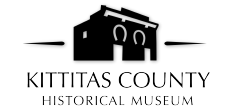CADWELL BUILDING
The Cadwell Building:
The Heart of the
Kittitas County
Historical Museum
After the Great Ellensburgh Fire devastated downtown Ellensburgh on July 4, 1889, two men partnered to build a new building on the southwest corner of East 3rd Avenue and North Pine Street.
The two men were Edward P. Cadwell, a businessman who also was a lawyer and real estate broker, and J. C. Lloyd who owned Lloyd Mercantile Company, a dry goods and clothing store that would be rebuilt across North Pine Street. Together, they secured approximately one million bricks from local brickyards to construct the building.
The Lloyd-Cadwell Building was built as a 60-foot by 80-foot, two-floor building at a cost of $15,000. The first floor was to have two retail stores while the second floor would have office space.
Upon completion, Cadwell purchased Lloyd’s interest in the building for $5,000 and renamed it the Cadwell Building.
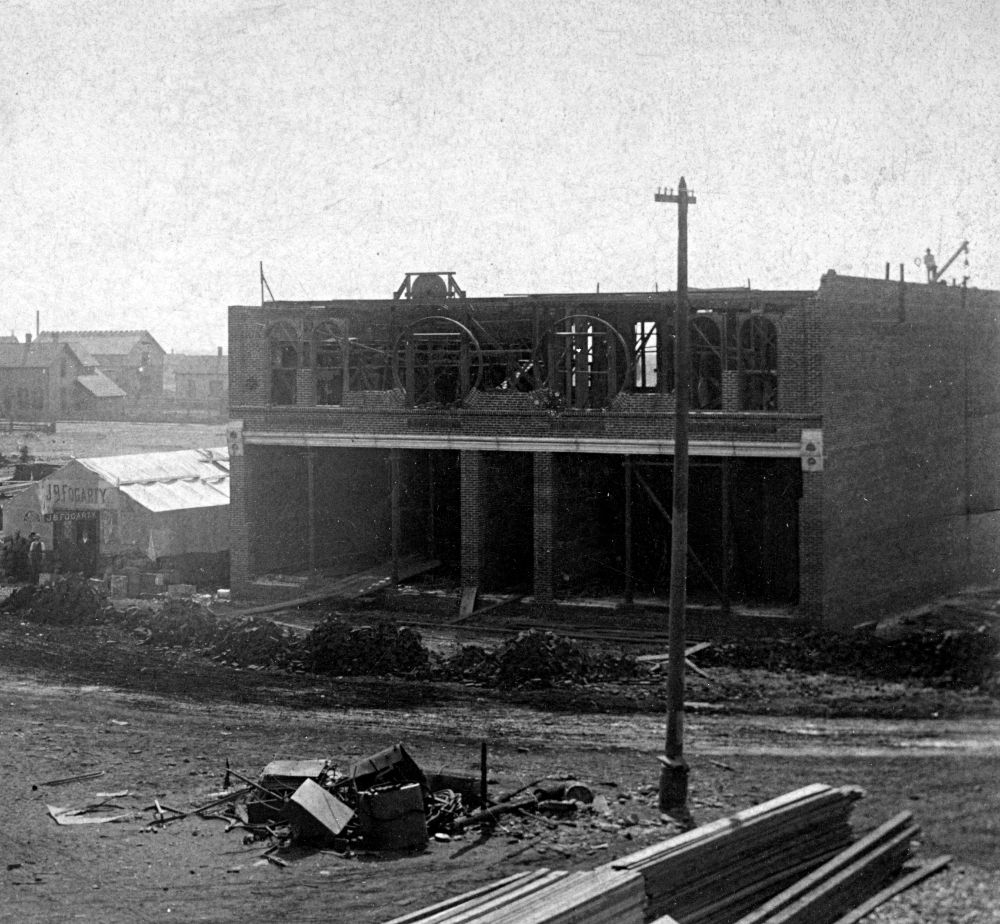
The Cadwell Building, Ellensburg WA.
Under Construction Late 1889.
Ultimately, the Cadwell Building was just one of four buildings that Cadwell owned or had half-interest in throughout Ellensburg at the time. But, due to the financial Panic of 1893, Cadwell lost his properties to sheriff’s auction for a small fraction of the price he paid. Over the years, the building has held multiple businesses in the first floor, but the types of businesses only changed a few times, dividing the history of the Cadwell Building into specific eras.
The Cadwell Building:
The Heart of the
Kittitas County
Historical Museum
After the Great Ellensburgh Fire devastated downtown Ellensburgh on July 4, 1889, two men partnered to build a new building on the southwest corner of East 3rd Avenue and North Pine Street.
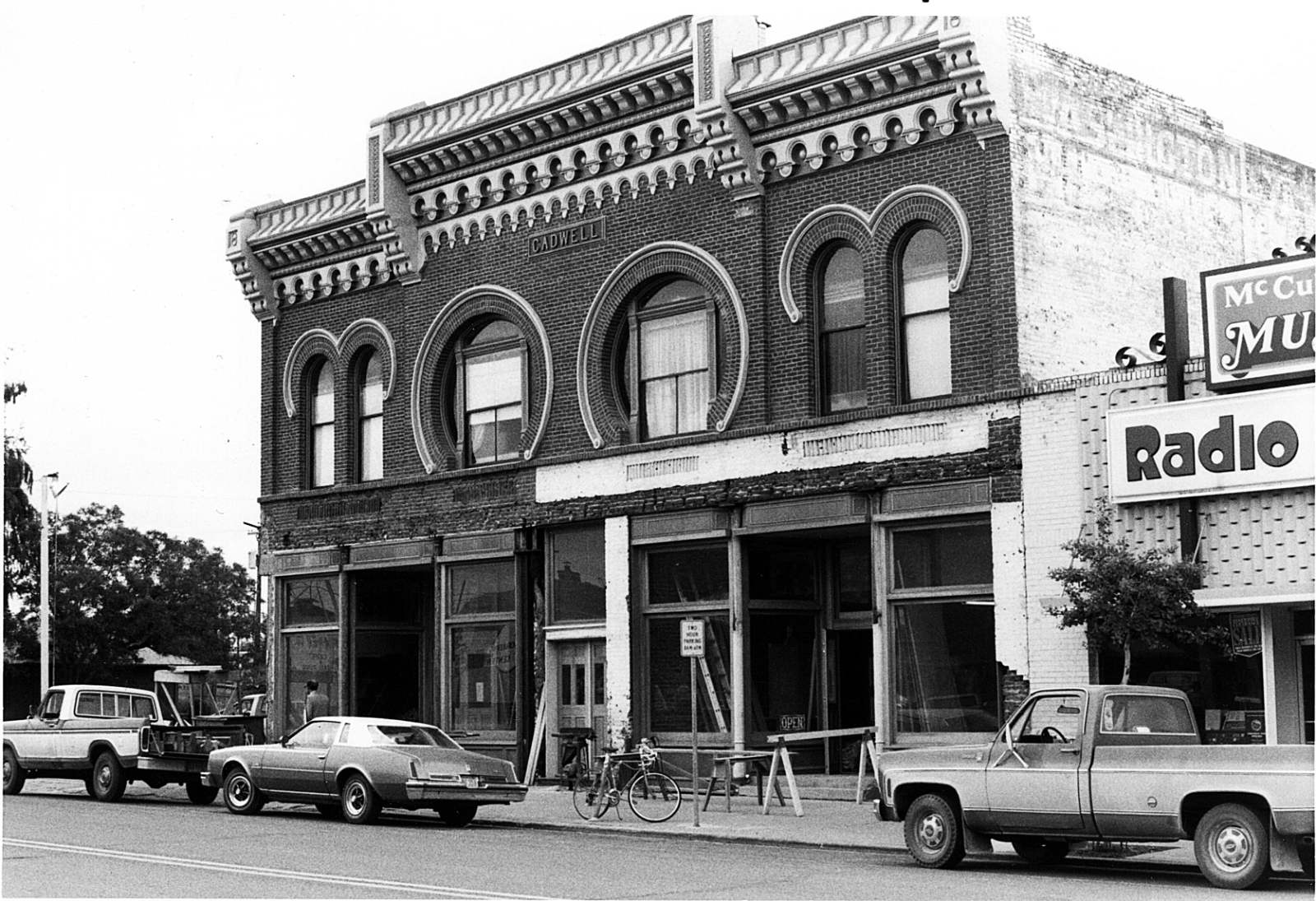
The Cadwell Building, Ellensburg WA.
The two men were Edward P. Cadwell, a businessman who also was a lawyer and real estate broker, and J. C. Lloyd who owned Lloyd Mercantile Company, a dry goods and clothing store that would be rebuilt across North Pine Street. Together, they secured approximately one million bricks from local brickyards to construct the building.
The Lloyd-Cadwell Building was built as a 60-foot by 80-foot, two-floor building at a cost of $15,000. The first floor was to have two retail stores while the second floor would have office space. Upon completion, Cadwell purchased Lloyd’s interest in the building for $5,000 and renamed it the Cadwell Building.
Ultimately, the Cadwell Building was just one of four buildings that Cadwell owned or had half-interest in throughout Ellensburg at the time. But, due to the financial Panic of 1893, Cadwell lost his properties to sheriff’s auction for a small fraction of the price he paid. Over the years, the building has held multiple businesses in the first floor, but the types of businesses only changed a few times, dividing the history of the Cadwell Building into specific eras.
Dry Goods, General and Grocery Stores
While the first official business in the Cadwell Building was a carpet and rug store, the first photographed were dry goods and grocery stores. Matthew Bartholet opened a dry goods store in 1902 in what was then known as the Horseshoe Block in where he sold a variety of goods to those along Third Avenue. By 1909, Bartholet had become a grocer, while Arthur H. Trotter opened a dry goods business in the second storefront. By 1913, Bartholet had closed and Gilmour and Gilmour Grocers had opened in what would become the Main Room of the Museum, remaining there until circa 1919. On the other side of the building, a women’s clothing store had opened before a brief use as a café then Rice Cycle Shop.
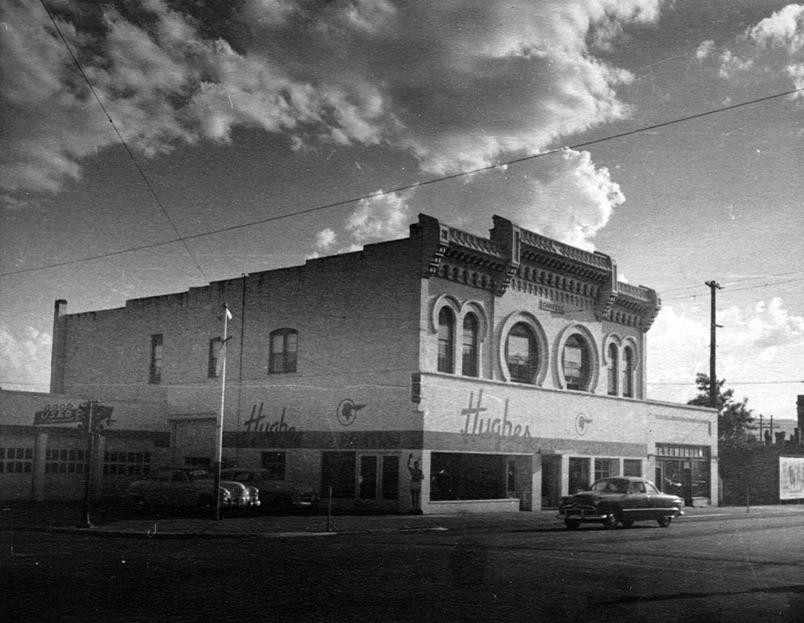
Hughes Pontiac Co.
circa 1952-1954
Automotive Repair and Sales
By the end of the grocery era and following World War I, the Cadwell Building began its second major use – in housing automotive businesses.
C & C Garage first opened by 1919, followed by Rollinger Radiator and Repair Shop (owned by brothers Thomas, Martin, and Augustus Rollinger).
From there, business changed to become a car dealership when Ellensburg’s Certified Motor Market opened by the late 1920s.
Cram-Buick Company, Dolquist Motor Sales Inc., and Phillips & Roe Motor Company each occupied the building between the 1930s and 1940s.
In 1952, Joe and Norman Hughes opened a Pontiac dealership, which they sold to Robert Lockhart in 1954 who then relocated the business by 1959.
Furniture and Music Stores
Charles and Gladys Davis purchased the Cadwell Building by 1960 and opened Davis Furniture Company, which occupied most of the building. In the space occupied by the Entry Room of the Museum today, Dorothy McCullough opened a music studio, where she sold musical instruments and offered lessons. The Davis Family retained ownership of the building until 1974, when they sold the building to the Kittitas County Historical Society, Inc., to be used as a museum.
Historical Museum
The Kittitas County Historical Society, Inc. was established in September 1961 and had opened a small museum in the basement of the Morris Sorensen Hospital Building (now Kittitas County Health Department) in May 1962.
The Historical Society was informed in late 1973 that the space they were using would no longer be available as the building was going to be repurposed, and that they would need to find a new location for the museum, which they found at the Cadwell Building in 1974.
On June 1, 1975, the Kittitas County Historical Museum was officially opened to the public with a grand opening ceremony. The museum occupied only part of the building that today makes up the Museum structure – buildings that the Historical Society was able to purchase over time.
In the late 1970s and early 1980s, the Cadwell Building underwent a restoration of the front façade, adding replica stained glass and design elements that had been removed since the 1910s.
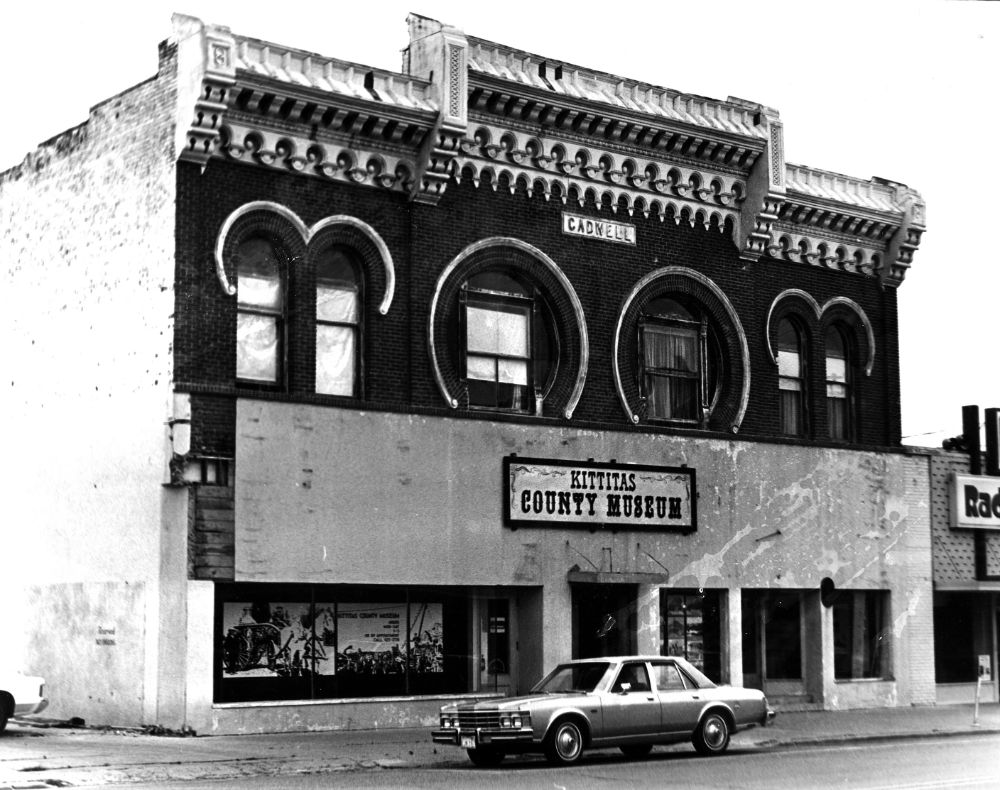
Pre Renovation of the Cadwell Building,
1975 − 1978
By 1999, the Cadwell Building underwent its next major remodel, in which the Historical Society brought together the adjacent buildings that it had acquired since 1974. This brought the Museum to its current size of nearly 9,000 square feet of display-only space in addition to 4,000 square feet of storage space and employee workspace. Today, the Cadwell Building serves to not only house much of the history of Kittitas County but is an important and valuable piece of our local history itself.
Second Floor
The Cadwell Building was built as a two-floor structure, and while most access and history has dealt with the first floor itself, the second floor has had a unique history all its own.
While intended as office space, the first known use of the second floor was as housing for the business owners of the carpet and rug store in 1890. It continued being used as housing throughout the early 1900s, until circa 1909 when it was utilized by the Chicago, Milwaukee & Puget Sound Division Engineer’s Office along with other apartment tenants.
By the late 1920s, the Cadwell Hotel – an apartment building – had gained a reputation as a house of ill-repute. Several local individuals have shared their memories of these ladies – of a young boy delivering newspapers to scantily-clad women who offered him cookies and other treats; of fruit being delivered by unmarried men during the Depression (in order to avoid any appearance of scandal by the married male grocery owner); and (as a young girl) of looking up and seeing the “pretty ladies” hanging out the window and whistling down the street, and saying to her father that she wanted to be just like them. The exact history of this time period is unknown, including any history on the women themselves.
Local directories listed the Cadwell Building as housing the Liberty Apartments by 1946, and in 1948, there were 15 occupied units. In 1954, the owner of the building began consolidating the units into six larger, modern apartments with amenities such as private bathrooms and kitchens. These apartments were then known as the Sheraton Apartments until the Kittitas County Historical Society, Inc. purchased the Cadwell Building in 1974, renaming them as the Cadwell Apartments in the late 1990s. Today, the Cadwell Apartments are still owned and operated by the Kittitas County Historical Society, Inc. as one of the primary income sources for the Museum.

